Bird of Paradise plants are scientifically known as strelitzia and are famous for their beautiful bird-like flowers. These tropical flora are indigenous to South Africa and are loved for indoor and outdoor landscaping due to their compelling appearance and low maintenance.
Bird of Paradise naturally features large, beautiful paddle-shaped leaves resembling a tropical bird. These plants can compete in extreme conditions and can bear many plant issues, one of which is leaf curling.
Leaf curling in Bird of Paradise plants can be a concerning issue for plant lovers and it can cause them trouble, it may indicate problems that need to be addressed quickly to ensure the plant’s health, energy, and life.
Understanding the reasons for leaf curling in Bird of Paradise plants is crucial to protect the plants and take proper care and maintenance. In the coming article, we will hunt through the common problems of leaf curling and explore effective solutions to settle the problems of curling the bird of paradise leaves.
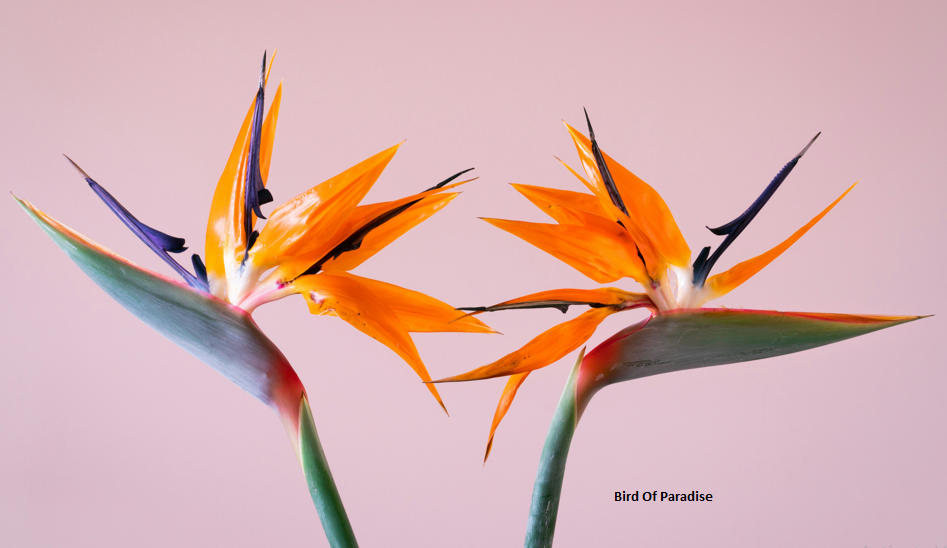
Identifying Curling Leaves
To solve the problems of curling leaves of birds of paradise plants, first, we need to identify the various ways and types of curling leaves of birds of paradise. The following are different types of curling leaves problems.
Upward Curling:
The leaves of the bird of paradise look like a cupped shape and curl upward in this situation.
Downward Curling:
The edges of the leaves curl down and look like a weakened and faded flag.
Twisting:
The whole leaf would twist, fold, or curve in a circle or spiral appearance.
Discoloration:
The leaves in this type of disease may also get discoloration such as the leaves getting brown or yellowish along the curling.
We can inspect these types and issues in the plants by observing the plants closely and looking for the changes in their appearance. Once the type of curling is identified, we have to investigate the basic factors that are causing the issue of curling the bird of paradise’s leaves.

Common Causes of Curling Leaves
The disease of curling leaves in the plants of Bird of Paradise can be caused by different factors, such as environmental issues, watering practices, pest infestation, bad potting soil, and diseases.
By diagnosing these factors, plant lovers will be able to solve the issues of the plants of the bird of paradise and make their plants healthy and beautiful to the optimal health condition and their original stunning beauty.
Ecology factors can play a significant part in leaf curling problems and can affect the overall health of the plant. The following are some key factors that can cause different problems in the plants and we have to treat them accordingly.
a. Temperature Extremes:
Bird of Paradise plants can bear extreme conditions up to some extent and can thrive in them but they can experience leaf curling if the plants are exposed to drastic heat and cold. The sudden fluctuations in the conditions such as air conditioners and drafts from heaters can cause leaf curling issues and lead to concerns for the bird of paradise.
b. Humidity Levels:
The plant can thrive in extreme conditions but we have to keep it at a certain level to avoid the leaf curling and insufficient humidity levels can also make the bird of paradise leaves curl.
These levels can hurt the plants, especially in indoor habitats in dry air. Increasing humidity levels through different methods can help to avoid the leaf curling in the plants. We can use a humidifier or can mist, and moisture the plants.
c. Light Conditions:
Bird of Paradise plants need indirect, bright, and moderate light to grow in and show their elegancy but insufficient light or exposure to prolonged or direct sunlight can cause leaf curling the plants and affect the the growth of the bird of paradise.
Understanding and inquiring about these factors, optimizing them, and implementing the most suited exercises for the plants can help grow healthy bird of paradise plants and help to avoid leaf curling diseases in the plants.
Watering Issues:
Watering practices are crucial for the maintenance of proper hydration levels in plants, herbs, and flowers, and Bird of Paradise is also very sensitive in the watering areas. Proper watering can make your flowers the healthiest in the surroundings and look amazing.
However, improper and unsuitable watering practices methods can cause leaf curling in the plants and increase the chances of related diseases in the herb.
The following are some watering problems to consider while watering the plants.
a. Overwatering:
Excess watering may spoil the soil and decrease the level of oxygen in the soil and the roots may suffocate due to lack of oxygen in the soil. It will result in different symptoms and diseases in the bird of paradise plant like leaf curling, yellowing, and declining in the health level of the plant. It is necessary to dry out the soil properly between waterings and ensure proper drainage of the soil to avoid over-watering.
b. Underwatering:
Underwatering can also cause some root problems in the birds of paradise plants. If the plants are not watered properly or underwatered, it can reduce moisture in the soil and the soil becomes dry which may result in insufficient nutrients in the soil and may dehydrate the plants which may lead to the leaf curling in the plants. Proper watering and regular schedules of watering can help to elude underwatering issues in the plants.
So proper watering is the essential factor while taking care of the bird of paradise plants to keep them healthy and beautiful. Do no overwater or underwater them.
c. Water Quality:
Water quality is also one of the most important factors while watering the bird of paradise plants to keep their health and maintenance in check and avoid harming them.
Hard water, containing high levels of calcium and magnesium can gather or accumulate in the soil with time, which can affect the quality of the soil and cause salt buildup in the soil which will eventually affect the plants’ ability to absorb nutrients and water and stop their growth.
We can avoid the problem by using distilled water or using some kind of filter to check the quality of the water and make the water suitable for their health or growth.
So watering properly, and with proper schedules can bring new life to the plants. Addressing the issues, and optimizing them with proper care can increase the health of the plants.
Avoid overwatering, look for underwatering, and check the quality of the water or filter the plantation water can promote healthy growth in bird of paradise plants and help us protect our plants from leaf curling.
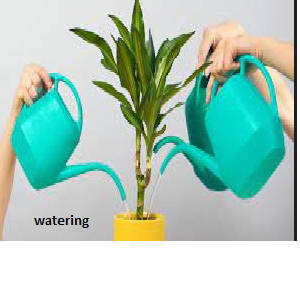
Pest Infestation
Pest infestation is another important and common factor that can cause leaf curling in Bird of Paradise plants. Different pests can attack and harm these plants. These pests can damage the leaves of the plants and stop their progress. The following are some pests that we have to take care of when loving our plants and protecting them from these nuisance bugs.
a. Aphids:
Aphids are some of the most common soft-bodied insects and are members of the big family that suck the sap of plants. They are also known as blackflies and greenflies. These soft-bodied bugs feed on the sap of the plants and can cause different problems in the plats including Bird of Paradise.
Bulky or heavy aphid interference can cause leaf curling, shape change, or discoloration in the leaves of the plants. Timely inspection and regular checks can help prevent these insects from destroying the Birds of Paradise
b. Spider Mites:
Spotted Spider Mites are tiny and members of the Tetranychidae family which has 1200 species. They infest over 200 plants including Bird of Paradise and feed on the undersides of leaves.
They suck the juices of plants and cause dying, sprinkling, dotting, and curling of the leaves. The affected leaves may develop mesh and finally stipple and curl the leaves. Using insecticidal or other pesticides or increasing the level of watering and humidity can help control the spider population and protect the plants from their damage
c. Mealybugs:
Mealybugs are soft-bodied, white, cottony insects of house plants that affect the leaves and stems of plants. They suck the sap of plants and secret honeydew of the plants including birds of paradise. Heavy infestation of the mealybug can cause leaf curling, wilting, and stunted growth in the plants.
Cutting severe mealybug-infested areas of the plants and applying pesticides or horticultural oil can help prevent them from spreading their population and protect the Bird of Paradise from further damage.
Frequent monitoring and casual checks can help us catch the infestation of the bugs and prevent them from damaging the plants. Pest infestation monitoring is essential for the maintenance and health of the life, growth, and vitality of Bird of Paradise plants and prevents them from curling.
Disease
Different diseases can also affect the herb’s health which may cause the leaf curl. It may compromise the health and appearance of the Bird of Paradise. We will dig into these diseases precisely in the coming lines and find solutions for these diseases to protect our plants from them and ensure their health and beauty.
a. Fungal Infections:
Fungal diseases can distort the roots and leaves of the shrubs which may affect them with rot root and spot leaves of the Birds of Paradise and lead to leaf curling, discoloration, spoiling, decay, and decomposing of the plants. These diseases grow and can thrive in moist conditions. Overwatered or badly drained soil is the most suitable environment for them to thrive in.
To avoid this disease, we have to reduce humidity, improve the circulation of the air, dry the soil, and apply proper watering practices. However, to cure our plants fast, we can use fungicidal treatments and other pesticides and control the damage of the fungal disease.
b. Bacterial Infections:
Bacterial diseases grow in the spaces between cells and have many symptoms which may include overgrowth, wilts, blight, scabs, and necrosis in Bird of Paradise plants. These infections enter the plant cuts, spaces between cells, and wounds and spread rapidly in the herbs in their favorite conditions.
Removing or cutting the infected areas, scheduling proper watering practices, and applying fungicides can help prevent bacterial diseases.
Again, frequent checks are essential to prevent any type of issue in the plants. Identifying and treating these problems and diseases can help us protect our plants from spreading these diseases and make our Bird of Paradise look beautiful and happy.
To avoid these issues, we must keep in check proper sanitation, regular monitoring, and healthy practices for the plants.
Diagnosing Leaf Curling
Diagnosing the core problem and cause of leaf curling in the Bird of Paradise plants needs proper and careful observation and regular inspection of the plants. To keep in check the factors and causes, a keen analysis of different factors is essential. Here are some important issues while diagnosing leaf curling in Bird of Paradise.
Inspect the Plant:
Examine the infected areas of the plant. Check the appearance and shape of the leaves, inspect the stems, and measure the overall growth pattern. Look for changes in the colors of leaves, and stems or inspect if there is any change in the plant’s growth. You can look for any signs of discoloration, infection, pest activity, or wilting.
Check Environmental Conditions:
A suitable environment is one of the most necessary factors to keep your Bird of Paradise fresh and healthy. Keep an eye on the surroundings of the plants and optimizing light, temperature, humidity, and air circulation can help you grow your plants healthy and keep them safe from any curling leaf or other diseases. Make sure that the plant is receiving the needed light and not exposed to extreme levels of heat, cold or the air is not fluctuating much.
Evaluate Watering Practices:
Look for the soil quality and check the moisture in it. Test the water level in the soil and make sure that the plants are not overwatered or underwatered, and if there is any such problem change the watering schedules according to the moisture level and the needs of the plants. You can also check for signs of root rot or soil condensation.
Look for Pest Infestations:
Pest infestations play a crucial role in the devastating health of plants. Inspect the Bird of Paradise for any signs of any pest infestation. It can be aphids, mealybugs, or spider mites. A pest infestation can be investigated thoroughly by checking the undersides of leaves and the stems of plants for pests.
Examine for Disease Symptoms:
Pay attention to any disease symptoms of fungal or bacterial in the Bird of Paradise plants. The symptoms can be leaf spots, mold growth, wounds, cuts, or any gash in the plants. This can be easily checked by the fluid or essence of the plants. If there is any unusual fluid or odors, it can be the result of a bacterial infection.
By assessing these factors properly and frequently, you can spot and understand the core factors of leaf curling in the Bird of Paradise plants. Once the issue is spotted, it is easy to cure the plant by implementing the right solution to sort out the issue effectively.
Treating Curling Leaves
Following the understanding of the core factors of the Bird of Paradise plant leaf curling problem, there are special and targeted treatments for the specific issue. Here are some effective methods and strategies to cure the curling leaves of plants.
Adjusting Environmental Conditions:
Temperature and Humidity:
Sustain proper temperature and humidity levels for the plants. The surroundings can be set according to different methods such as misting or using a humidifier. Avoid exposing the plants to the utmost environmental conditions like extreme heat or cold conditions. Keep good air circulation for the plants to grow in.
Light Exposure:
Proper light is necessary for the Bird of Paradise. Keep sufficient, indirect, bright light for the plants in the environment. Avoid exposing the plants to direct light which can cause sunburn and curling leaves in the plant.
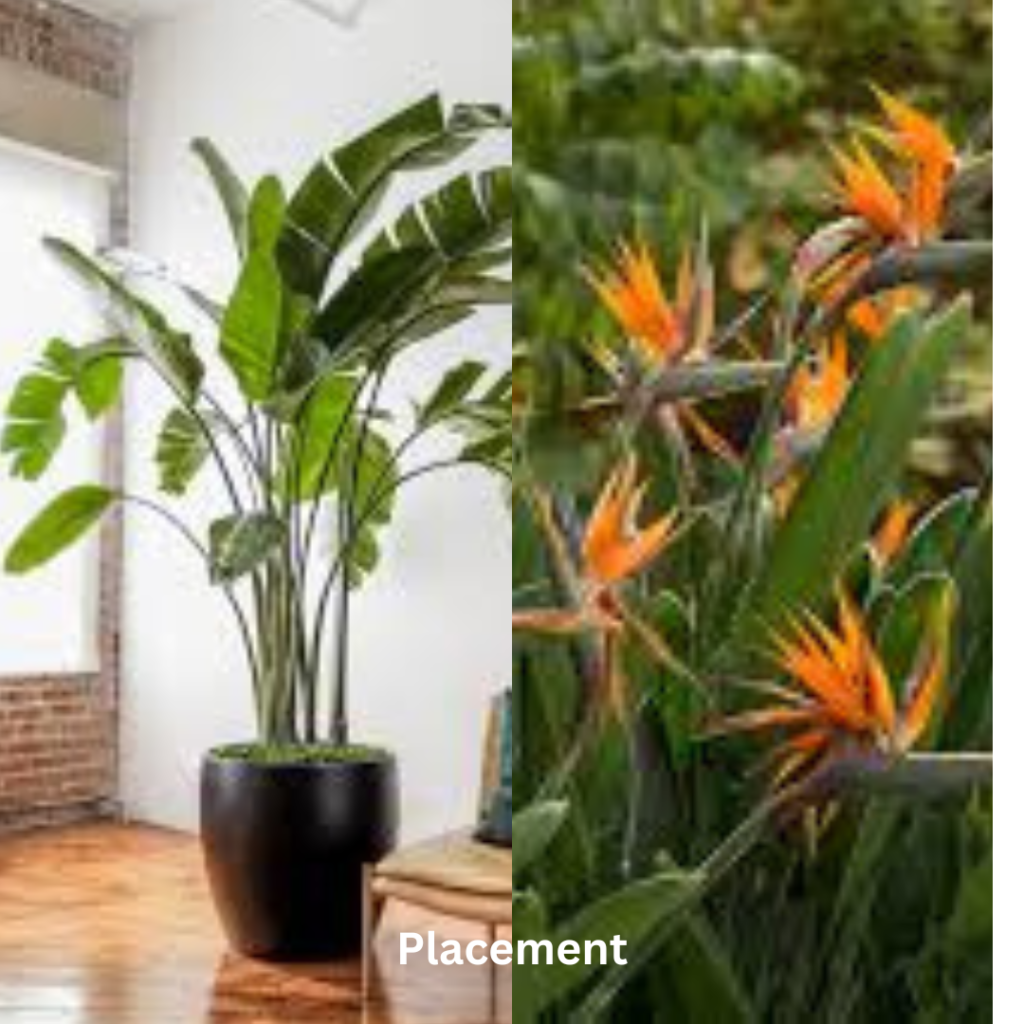
Proper Watering Techniques:
Watering Schedule:
Use proper watering techniques. Schedule watering practices according to the soil and the needs of the plants. Avoid overwatering and underwatering. Let the soil dry out between the watering times.
Water Quality:
Use proper drainage techniques to avoid salt buildup in the soil. Keep checking the quality of the water, filtered or distilled water can help prevent salt buildup in the soil and keep required PH levels.
Pest Control Measures:
Natural Predators:
You can use plants friendly bugs and insects like ladybugs, and predatory mites to keep unwanted and harmful pests away and to control their population.
Insecticidal Treatments:
Can use different methods and techniques to keep away harmful insects from infesting your plants and harming them. You can use insecticidal soap or any other pesticides to target insects like spider mites, mealybugs, or aphids. Use the pesticides according to the needs of the plant and as per the instruction from the manufacturer.
Disease Management:
Pruning:
Remove the infected areas of the plants. Cut off the affected leaves or some stem of the plant to stop the spread of the disease and use disinfected tools while pruning.
Fungicidal Treatments:
Copper-based fungicides can help control fungicides and can be the most effective against them.
By implementing these methods and strategies, you can successfully address the curling leaves problem in the Bird of Paradise and provide them with a healthy environment to flourish.
Preventing Leaf Curling
Prevention is a key factor in sustaining the health and beauty of the Bird of Paradise plants and minimizing the problems of leaf curling. We can take proactive measures to keep the plants from leaf curling.
Maintenance Tips:
Regular Inspections:
Frequently examine the Bird of Paradise plants for signs of diseases, infestation, or stress. Early or timely observation can help us stop the issues from escalating.
Pruning and Deadheading:
Prune dead or infected leaves or stems and make the proper distance in the flowers to keep good airflow and circulation within the plant and in the environment. Cut off any overcrowded or unhealthy foliage to promote good health.
Fertilization:
Use balanced fertilizer dosage as per the needs of the Bird of Paradise during growing seasons to provide robust growth and essential nutrients. Avoid overusing fertilizer, it can cause the plant to burn.
Regular Inspection and Care:
Monitor Environmental Conditions:
Keep a check on the environmental conditions. Monitor humidity, temperature, light levels, and the air circulation. Adjust these factors according to the needs of the plants and adjust the plants for proper light.
Check for Pests and Diseases:
Conduct frequent inspections for diseases, pest infestation, and other signs that may show any type of illness in the plant. Take immediate action to solve the issue and prevent it from spreading to other plants.
Quarantine New Plants:
Isolation Period:
Quarantine new plants for some time and keep an eye out for any signs of pest infestation, diseases, stress, or any other related issue and solve it before integrating them into other plants.
Proper Plant Placement:
Indoor Placement:
Place your plants in a suitable space, where the Bird of Paradise can get indirect, bright light and proper airflow. Avoid placing the plants in a drafty place or heat site.
Outdoor Placement:
If the plants are grown outdoors, choose a place with indirect sunlight, well-draining soil, and partial shade. Protect plants from strong winds, direct light, and frost.
By implementing these effective and potent techniques and measures, plant owners can sustain a healthy Bird of Paradise and reduce the chances of leaf curling in the plants.
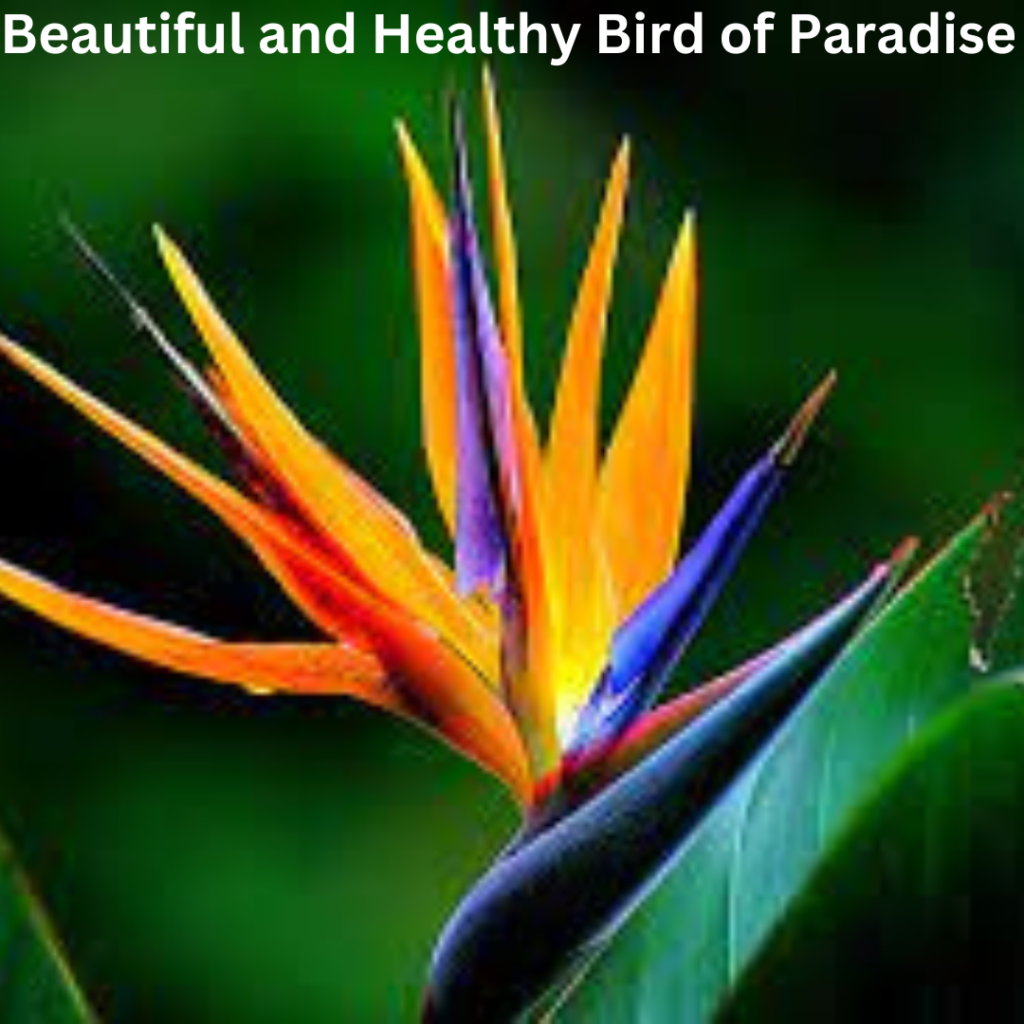
FAQ about Bird of Paradise:
How do you fix curling leaves on Bird of Paradise?
> Good and proper temperature
> Proper watering practices
> Good air circulation
How do you fix curling down leaves?
downward curling is often caused by overwatering. let the soil dry out and balance the watering practices.
Can you fix the leaf curl?
Yes, Leaf curling can be fixed through the use of different strategies and good use of pesticides.
How often should I water my Bird of Paradise?
You must water your Bird of Paradise every 1 or 2 weeks. This practice will let the soil dry out and the plant will be happy.
Should I remove leaves with leaf curl?
Yes, pruning and removing can help control the spread of leaf curling in the Bird of Paradise.
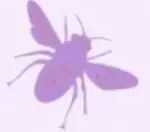

6 thoughts on “Get Rid of Bird of Paradise Leaves Curling with proven strategies”